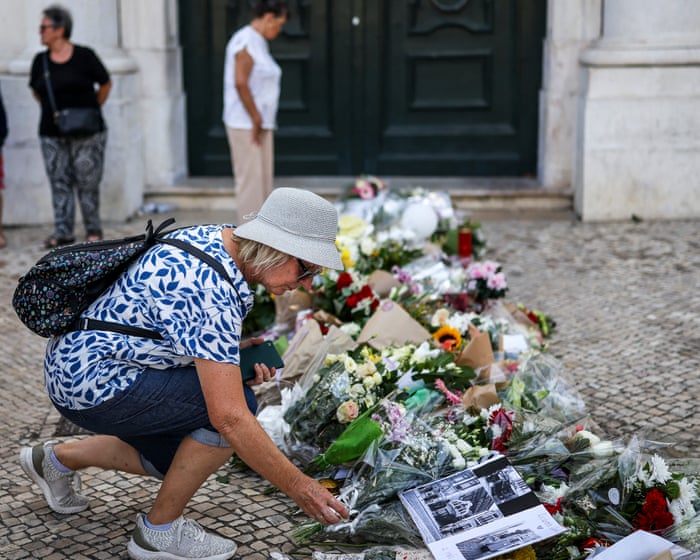A British couple who died in a Lisbon funicular accident on Wednesday have been identified as Kayleigh Smith, 36, and William Nelson, 44. They were among 16 people killed when the Elevador da Glória tram derailed and crashed into a building. Smith, from Macclesfield in Cheshire, was a graduate of the Arden School of Theatre in Manchester, where Nelson worked as a theatre director. The identity of the third British victim has not yet been released.
Portugal’s Prime Minister, Luís Montenegro, described the accident as “one of the biggest tragedies in our recent history.” In addition to the fatalities, 21 people were injured, five of them seriously.
Police confirmed that the victims included five Portuguese citizens, three Britons, two South Koreans, two Canadians, one American, one Ukrainian, one Swiss citizen, and one French national. A German citizen initially thought to have died was later found alive in a hospital. Local media had earlier reported that a German father died, his wife was seriously hurt, and their three-year-old child suffered minor injuries.
Hours before the crash, Smith posted photos on Instagram from the couple’s first day in Lisbon, with the caption: “Churches and castles, tiles and trams.”
MADS Theatre in Macclesfield paid tribute to Smith, describing her as a valued member who made significant contributions to drama in the region. She was an award-winning director and award-nominated actress, and had held various roles at the theatre, including vice-chair and head of tech. The theatre expressed deep condolences to both families.
The German foreign ministry confirmed at least three German nationals were hospitalized. Other injured individuals include citizens from Spain, Israel, Portugal, Brazil, Italy, and France, according to Portugal’s national health service director.
Among the victims were André Jorge Gonçalves Marques, who worked as the brake guard on the funicular, and Pedro Manuel Alves Trindade, a former volleyball referee. Marques was described by his employer, Carris, as a dedicated and kind professional.
Investigators have found no evidence of sabotage, suggesting the cause may be mechanical failure or maintenance issues.Maintenance issues are among the possible causes. The Glória line transports approximately 3 million people each year. Its two cars, each with a capacity of about 40 passengers, are connected to opposite ends of a haulage cable, and electric motors on the cars provide traction.
A spokesperson for No. 10 said: “The prime minister is deeply saddened to learn that three British nationals lost their lives in the funicular accident in Lisbon. His thoughts are with their families and all those affected by this tragic event. We stand in solidarity with Portugal during this difficult time.”
Frequently Asked Questions
Of course Here is a list of FAQs about the British couple killed in the Lisbon funicular accident designed to be clear concise and in a natural tone
Basic Information The Event
Q What happened in Lisbon
A A funicular in Lisbon Portugal derailed resulting in the tragic deaths of a British couple
Q Who were the victims
A They were a British couple from London Out of respect for the families their full identities are often not widely publicized immediately
Q Which funicular was it
A The accident happened on the Elevador da Bica one of Lisbons famous and historic tram lines that climbs a very steep hill
Q When did this accident occur
A The accident occurred on
For Travelers Safety
Q Are the funiculars in Lisbon safe now
A Following the accident the specific funicular involved was closed for a full safety investigation Other lines likely underwent inspections Its always best to check the current status with local transport authorities before riding
Q Should I avoid riding funiculars in Lisbon
A This was a tragic but isolated incident Funiculars are generally a very safe mode of transport The decision is personal but millions of people ride them safely every year
Q What is being done to prevent this from happening again
A A thorough official investigation was launched to determine the exact cause The findings would lead to new safety protocols maintenance schedules or operational changes to prevent a recurrence
Deeper Questions
Q What is the official cause of the accident
A The final official cause is determined by a transport safety agency investigation This process can take time to ensure accuracy Early reports may speculate but its best to wait for the official report
Q Has anything like this happened in Lisbon before
A Serious accidents on these historic transport lines are extremely rare which is why this event was such a shock




